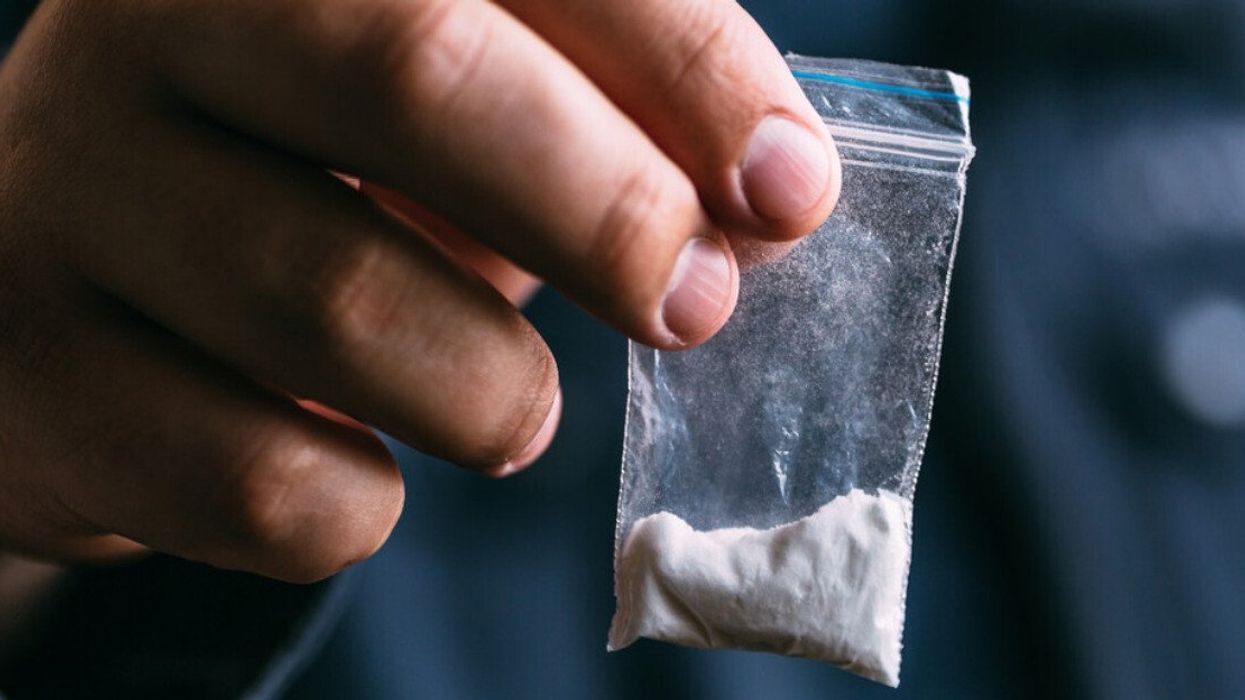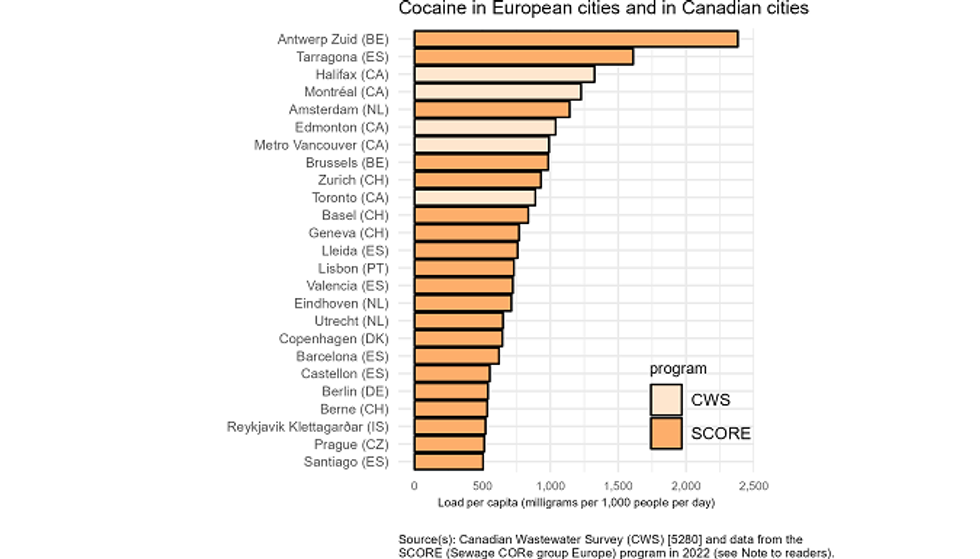Cocaine Use In Each Canadian Province Was Ranked — Here's Where Montreal Stands
Wastewater tells no lies.

Someone holds up a bag of white powder.
There's something in the wastewater, and it's not what you might expect. New data from Statistics Canada shows a surge in cocaine use across Canada, based on the sewage of major cities, and Montreal placed in the top three with the highest daily cocaine detection.
From January 2020 to May 2023, the government measured the concentration of cocaine metabolites in wastewater samples from various municipalities and found an average increase of 15% annually, indicating a consistent rise in drug consumption nationwide.
Topping the list is Prince Albert, Saskatchewan, with data showing an average daily intake of 1,633 milligrams of cocaine per individual this year. Halifax, Nova Scotia, registered a daily average of 1,440 mg of cocaine for every 1,000 residents.
Montreal ranked third with a daily detection of 1,277 mg of cocaine for every 1,000 people. Among the cities highlighted in the report, Metro Vancouver and Toronto appear to consume less but still register 1,062 mg and 1,001 mg daily per capita, respectively.
Amphetamine use in Canada rose sharply in 2022, but early signs in 2023 suggest it might level off. However, cocaine use is still on the rise, and it's outpacing most of Europe.
Approximately half a million Canadians admitted to using cocaine over the past year, according to the United Nations Global Report on Cocaine, released in March. That correlates with data from the Canadian Centre on Substance Use and Addiction, which found about 2% of Canadians aged 15 and older have tried the drug. Meanwhile, over 7% of Canadians between the ages of 17 to 25 reported using cocaine between 2019 and 2020.

Cocaine, classified under Schedule I of the Controlled Drugs and Substances Act, is illegal for sale, possession, or production unless specifically authorized for medical or scientific purposes. While it's commonly snorted, cocaine can also be injected, and its variant, crack, is typically smoked. The immediate effects of the drug can range from anxiety and dizziness to nausea and tremors. Over time, users might face severe health issues like depression, respiratory problems, and heart conditions.
The country is simultaneously battling an opioid crisis, with many lives lost to overdoses. A recent report from the Public Health Agency of Canada highlighted that around 70% of opioid-related deaths this year also involved stimulants like cocaine.
The recent release from the Canadian Wastewater Survey (CWS) sheds more light on the situation. With data collection dating back to 2019, the CWS focuses on testing wastewater samples from various municipalities for drug presence. Their findings confirm that as drug overdoses increased by over 30% from 2020 to 2021, approximately half involved a stimulant, with cocaine being a significant contributor.

Cocaine's presence in wastewater isn't an isolated Canadian phenomenon. The European Monitoring Center for Drugs and Drug Addiction has been monitoring drug levels in over 150 cities across 28 countries. When compared to these European cities, five urban centres in Canada, including Montreal, rank among the top 10 for the highest levels of cocaine detected in wastewater.
In a country known for its pristine waters, it's unsettling to know what really flows beneath. As sewers reveal a rising tide of cocaine consumption, the undercurrents of addiction in Canada become more clear.

